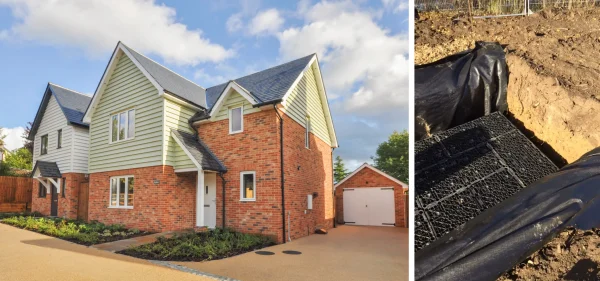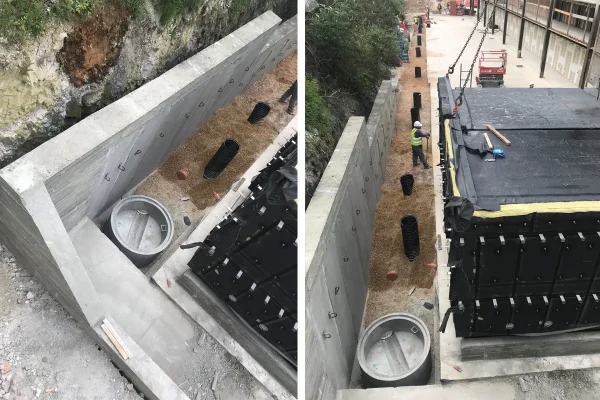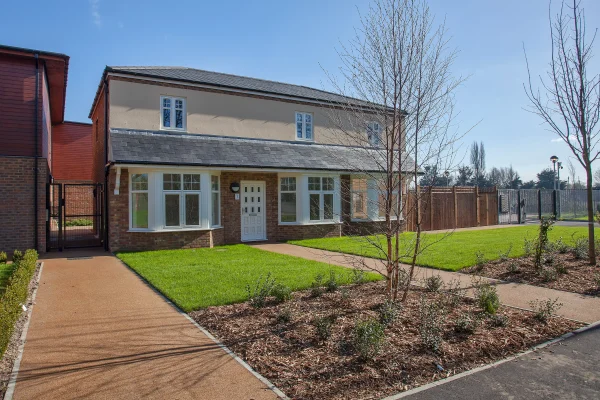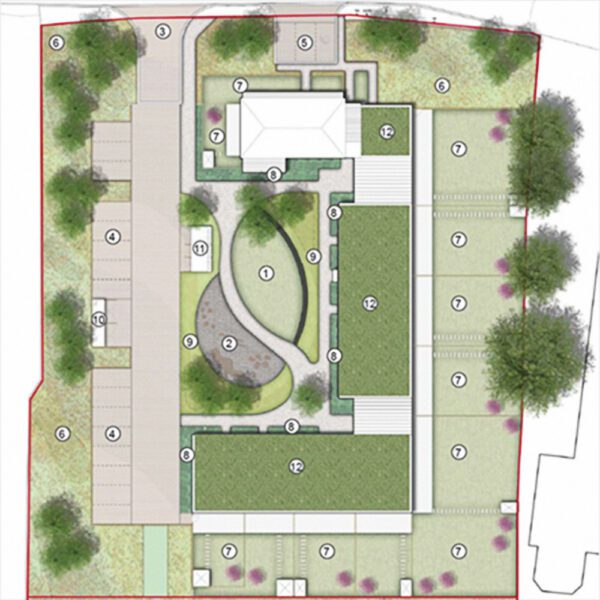If you’re embarking on a high-end construction or extension of a property, whether small or large in scale, you’ll need to consult a civil engineer.
Civil engineers play a crucial role in site preparation, infrastructure design, drainage, highways, and ensuring compliance with safety and environmental standards. Civil engineer benefits include optimising cost-effectiveness and improving sustainability.
At Peter Dann, our civil and structural engineers often work together on projects. By combining our expertise within the same team, we achieve smooth collaboration during the project’s life cycle.
So how do civil engineers benefit residential construction, and what challenges might they be required to overcome?
Here are 5 key insights:
Civil engineers design the grading of the land to ensure proper drainage and prepare the site for construction. They are also responsible for designing drainage and stormwater systems to prevent flooding.
As an example, we undertook the drainage and foundation design work for the high-end residential construction of Lake Villas in Furneux Pelham, Hertfordshire. Our design work for these five bespoke houses included a surface water drainage scheme using soakaways and principal drainage. For the disposal of foul water, we liaised with Thames Water. We also designed the external paved areas around each house to drain to permeable paved surfacing. This, along with the roof water run-off, attenuates in geocellular crates and infiltrates to the ground, as below.
If you’re planning to build on land adjacent to existing dwellings, you won’t want to overload the drains already in place. Civil engineers assess existing drainage and design for additional need, especially in residential construction reports.

Civil engineers work with structural engineers to design foundations for residential buildings, ensuring they can safely bear the weight of the structure.
One of the challenges a civil engineer must face is the issue of sloping land. The land on which you build or extend a property could be naturally sloping, or the result of erosion. Previous structural works on the land may have left it unstable or uneven. Additionally, land can become unstable beneath an existing property.
One solution is the use of retaining walls. Civil engineers design and plan retaining walls to stabilise slopes and create usable space.
 Retaining walls are vertical or near-vertical structures designed to restrain soil or other materials behind them. They’re crucial for preventing erosion and create level areas, making sloping land usable for building or other activities.
Retaining walls are vertical or near-vertical structures designed to restrain soil or other materials behind them. They’re crucial for preventing erosion and create level areas, making sloping land usable for building or other activities.
For the construction of a four-storey residential building on an established row of houses in London, our design of foundations and substructure works included retaining walls and hard landscaping to accommodate an existing basement and deal with changes in level at the ground floor, an example of how civil engineer benefits include providing stability in complex builds.
To the left are prefabricated retaining walls of reinforced concrete in place for the Marriott modular hotel in Luton. They were precast in a factory and transported to site.
Efficient traffic flow is essential, and it’s up to civil engineers to design and plan the layout of roads within developments, such as residential areas, which will also need to be accessed by existing highways.
Our civils teams have extensive experience with designing roads and associated services such as car parks, pedestrian crossings, signage and traffic signals to minimise congestion.
For California Meadows, a new sustainable housing development in Huntingdon, we undertook the design of the highway infrastructure, achieving the necessary agreements with the Highways Act and Cambridge County Council.

It’s imperative to manage traffic, consider the environment and ensure safety, thereby creating community friendly roadways, especially vital in high-end construction developments with unique site requirements.
When ground investigation surveys need carrying out, civil engineers request reports from Geotech engineers, so they know how to proceed.
Is the land stable? What was it previously used for? Could there be archaeology present? All this data informs civil engineers, thereby avoiding unsafe development and costly mistakes.
Architects collaborate with us to ensure that the building they’ve designed is structurally sound and integrates well with the surrounding environment.
We also work with contractors to ensure that construction is carried out according to the approved plans and specifications. This team integration is one of the many civil engineer benefits that simplifies residential construction projects.
Civil engineers ensure that all aspects of the residential build comply with local building codes and regulations. They also consider environmental factors and implement measures to minimise impact on the surrounding ecosystem.
Enhanced biodiversity is increasingly expected in high-end construction, where sustainability is a key factor.
A challenge we often face is poor land conditions, such as contamination. By improving the land conditions and introducing meadows is one way our civil works can impact the landscape positively.
For the Angler’s Retreat housing development in West Drayton, there had been historical issues with dumping behind the derelict pub. By restoring and converting the pub into residential dwellings, and developing the adjacent land for additional properties, we resolved the poor quality of soil, landscaped surrounding grounds and provided a wildflower meadow which enhanced biodiversity.


Always consider what type of land you’re planning to develop on and how it will impact surroundings, including neighbourhoods, conservation zones and even archaeology.
If you have planning permission and are ready to discuss your project, you can contact Peter Dann’s office in Cambridge or London to receive expert advice and a quote.